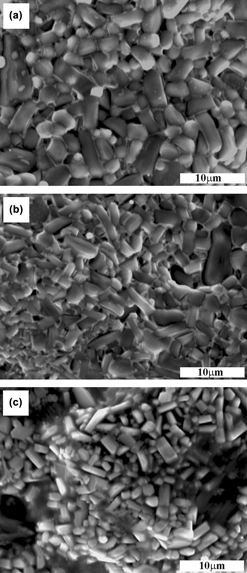Published online by Cambridge University Press: 16 April 2015

The Mn-steel matrix composite locally reinforced with in situ TiC–TiB2 ceramic particulate was successfully fabricated using a thermal explosion-casting route in a Cu–Ti–B4C system with various B4C particle sizes. With the increase of B4C particle size, the ignition temperature increased, the combustion temperature decreased, and the size of the TiC and TiB2 ceramic particulates became smaller. The hardness, friction coefficient, and wear resistance of the composite were higher than those of the Mn-steel matrix. With the increase of B4C particle size, the size of the TiC and TiB2 ceramic particulates fabricated in the local reinforcing region decreased, the interface bonding between reinforcing region and matrix became poor, and the number of pores in the local reinforcing region increased. Moreover, the composite with ∼3.5 μm B4C showed the best antiwear property. At a low load of 20 N, the dominant wear mechanisms of the Mn-steel matrix composite were microcutting and abrasive wear. While, at a high load of 80 N, the dominant wear mechanisms were microcutting and adhesion wear associated with the formation of delamination layer.